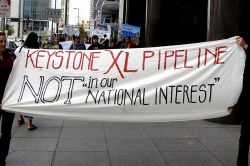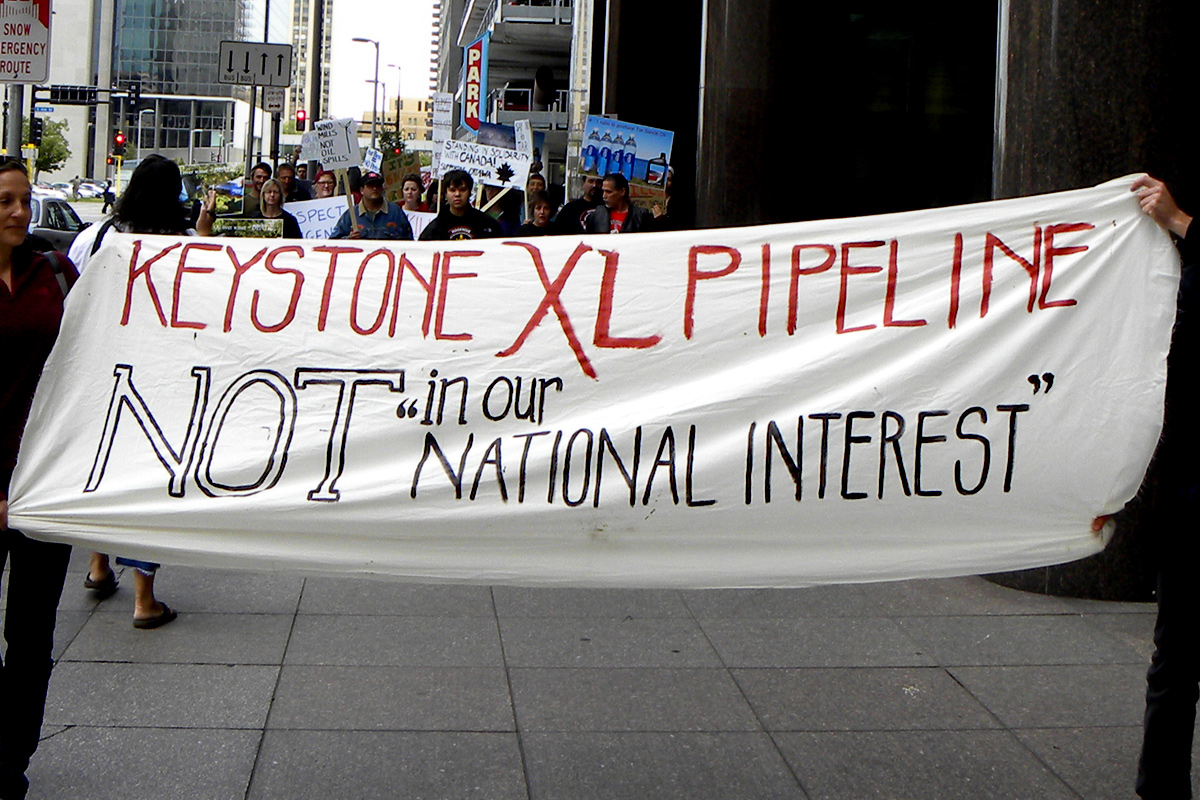
Fibonacci BlueThe EPA kind of said this, but with a lot more words.
The EPA has a special Earth Day message for the State Department: You still haven’t done your homework on the Keystone XL pipeline‘s potential environmental effects.
That’s the gist of the EPA’s official comments [PDF] on the State Department’s draft environmental impact statement for the proposed pipeline, submitted on the final day of the comment period. (Procrastination: It’s not just for college students.) State’s report found that Keystone would not have significant environmental impacts, but EPA says the report included “insufficient information” to reach a conclusion on the impacts.
EPA said [the State Department] failed to fully consider alternative routes for the Canada-to-Texas pipeline. …
Further, EPA urged the State Department to revisit its suggestion that Keystone would not expedite production of Canada’s carbon-intensive oil sands or significantly ramp up greenhouse gas emissions — two major assertions made by the pipeline’s critics.
It said the State Department used an outdated “energy-economic modeling effort” in its analysis that concluded oil sands would find its way to market without Keystone — likely through rail transport.
A Reuters investigation last week raised a lot of questions about whether rail is a viable alternative to pipeline transport for Alberta’s tar-sands oil.
Nebraska Watchdog has more on EPA’s analysis:
The EPA also said it has learned from the 2010 Enbridge oil spill in Michigan that tar sands spills may require different responses and can have different impacts than conventional oil spills. The agency said those differences should be more fully addressed in the State Department’s final report, noting that the Enbridge spill involved a 30-inch-wide pipeline, and Keystone XL proposes a 36-inch diameter pipe. In Michigan, the oil sands crude sank to the bottom of the Kalamazoo River and mixed with the sediment and organic matter, making it difficult to recover.
After nearly three years of cleanup, the EPA recently decided the bottom sediments will need to be dredged to protect the environment and public, largely because the oil “will not appreciably biodegrade.” The EPA recommended the final report more clearly acknowledge that in the event of a spill in water, large portions of dilbit will sink and that “submerged oil significantly changes spill response and impacts.”
The InsideClimate news site won a Pulitzer Prize last week for its reporting on the devastating effects of the 2010 Enbridge spill in Michigan.
Environmental groups and Keystone opponents are feeling vindicated by the EPA’s analysis.
Now that the comment period on the draft environmental study is over, the State Department will review the million-plus comments received and publish a final study. Then, perhaps in September, State will announce whether it thinks Keystone is in the “national interest.” And then, someday, President Obama will make the final call on whether or not to approve the pipeline.
Meanwhile, activists are gearing up to fight the pipeline through civil disobedience. The Rainforest Action Network, the company CREDO Mobile, and other groups plan to enlist tens of thousands of Americans to join in demonstrations. If that sounds like your kind of thing, sign the “Keystone XL Pledge of Resistance” and get hooked up with other activists ready to be arrested for the cause.



